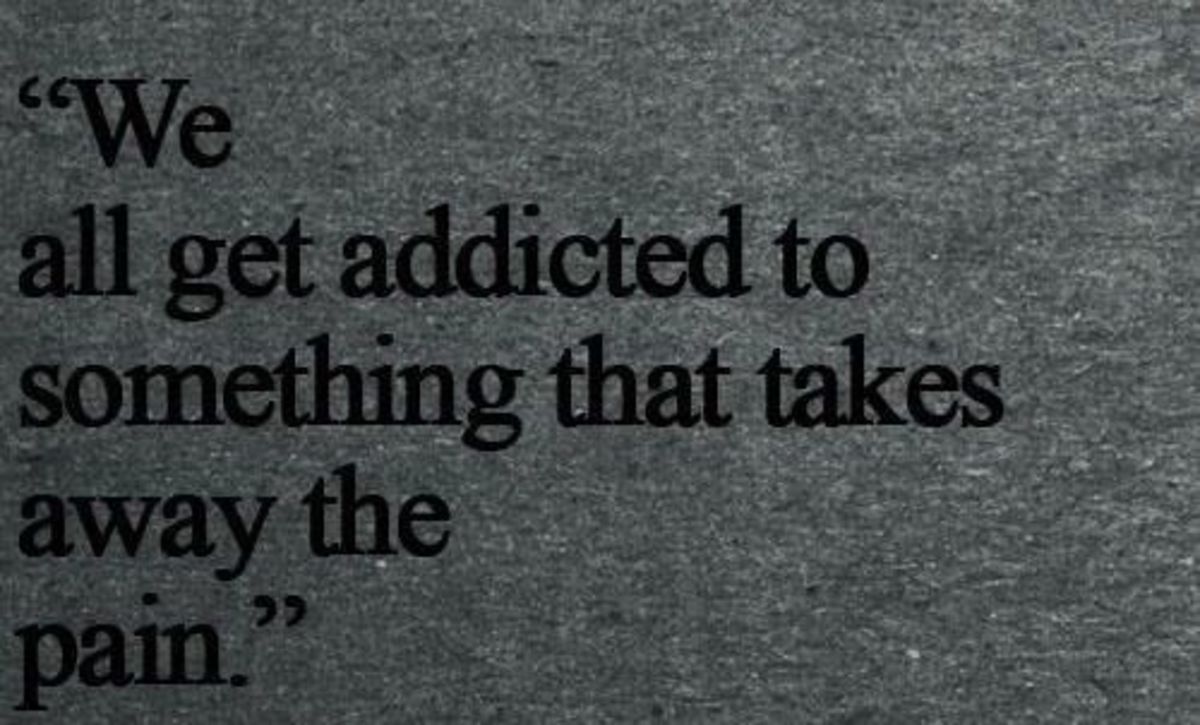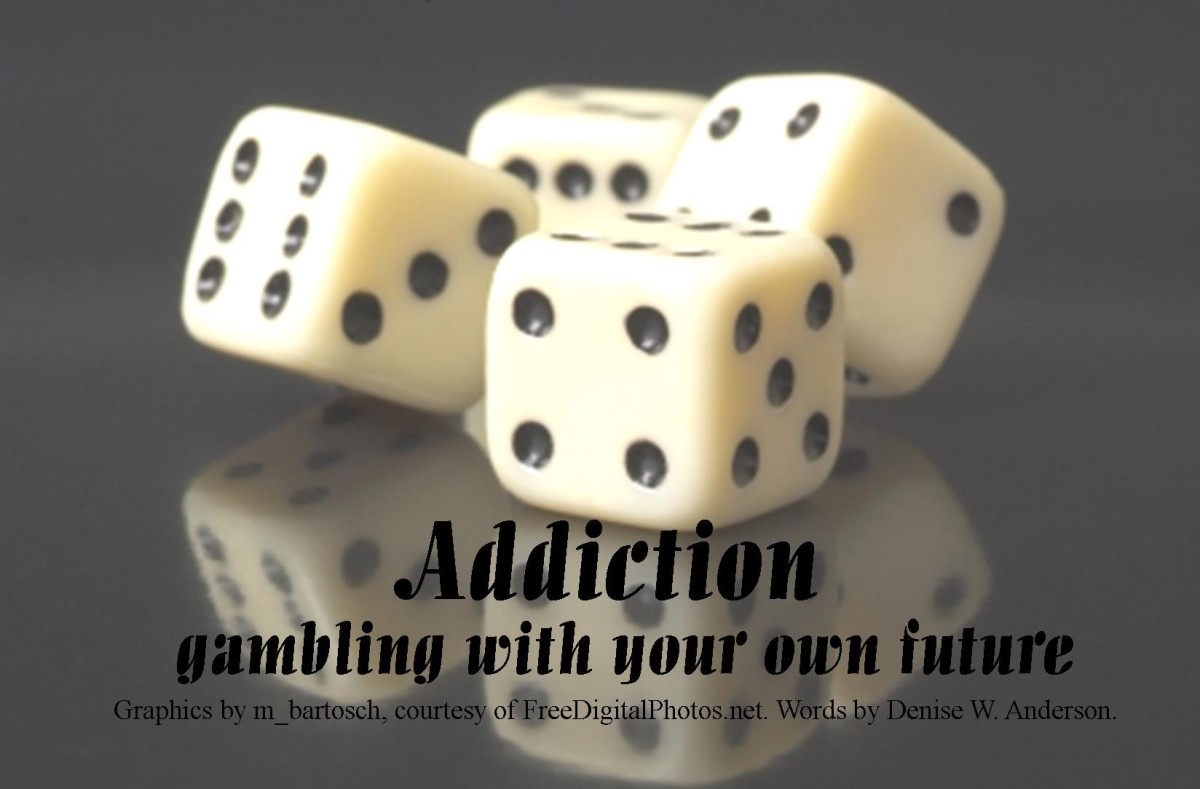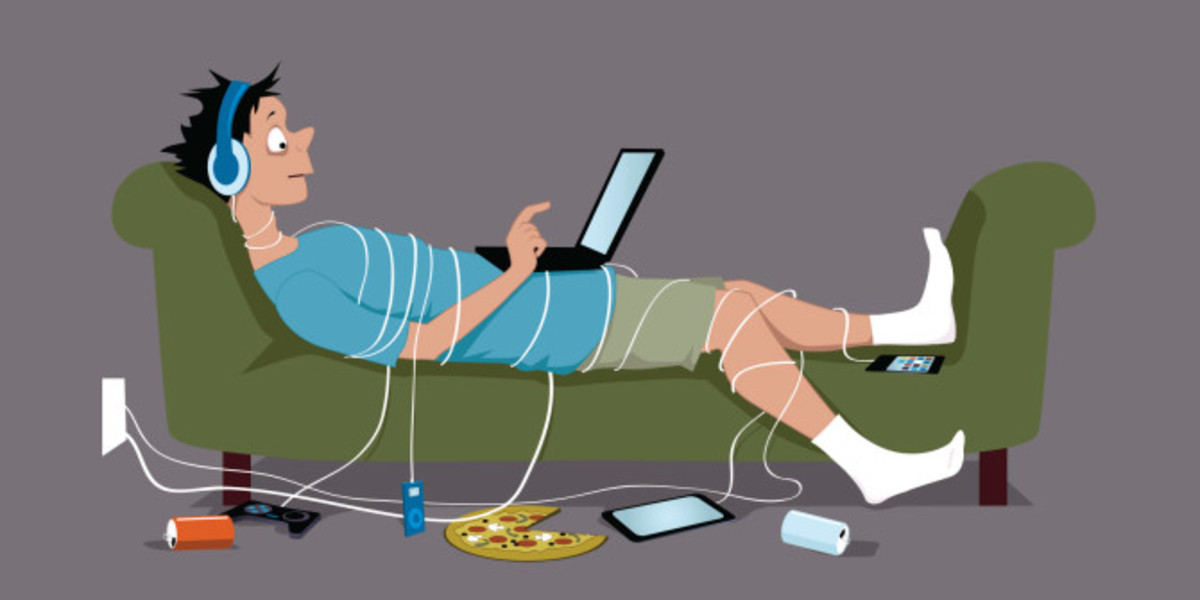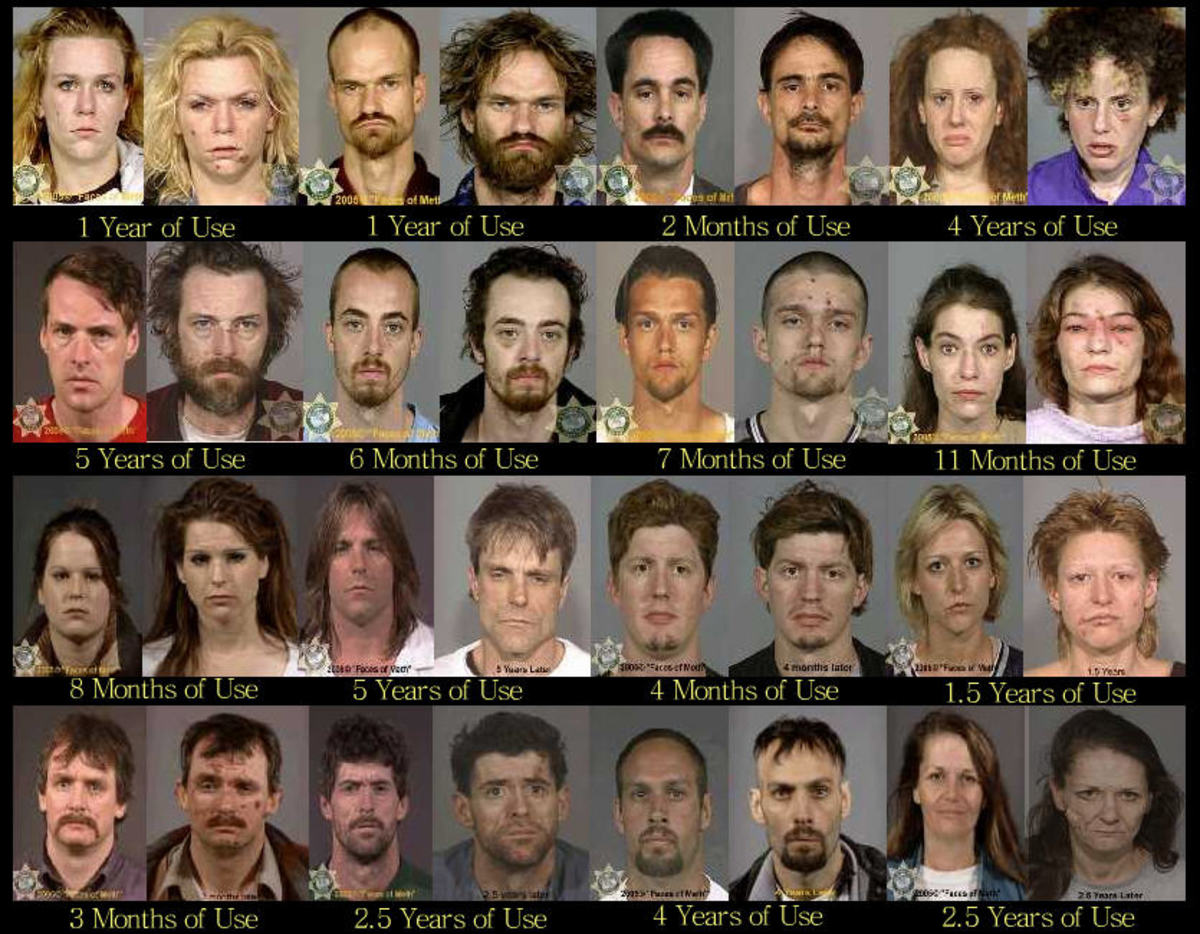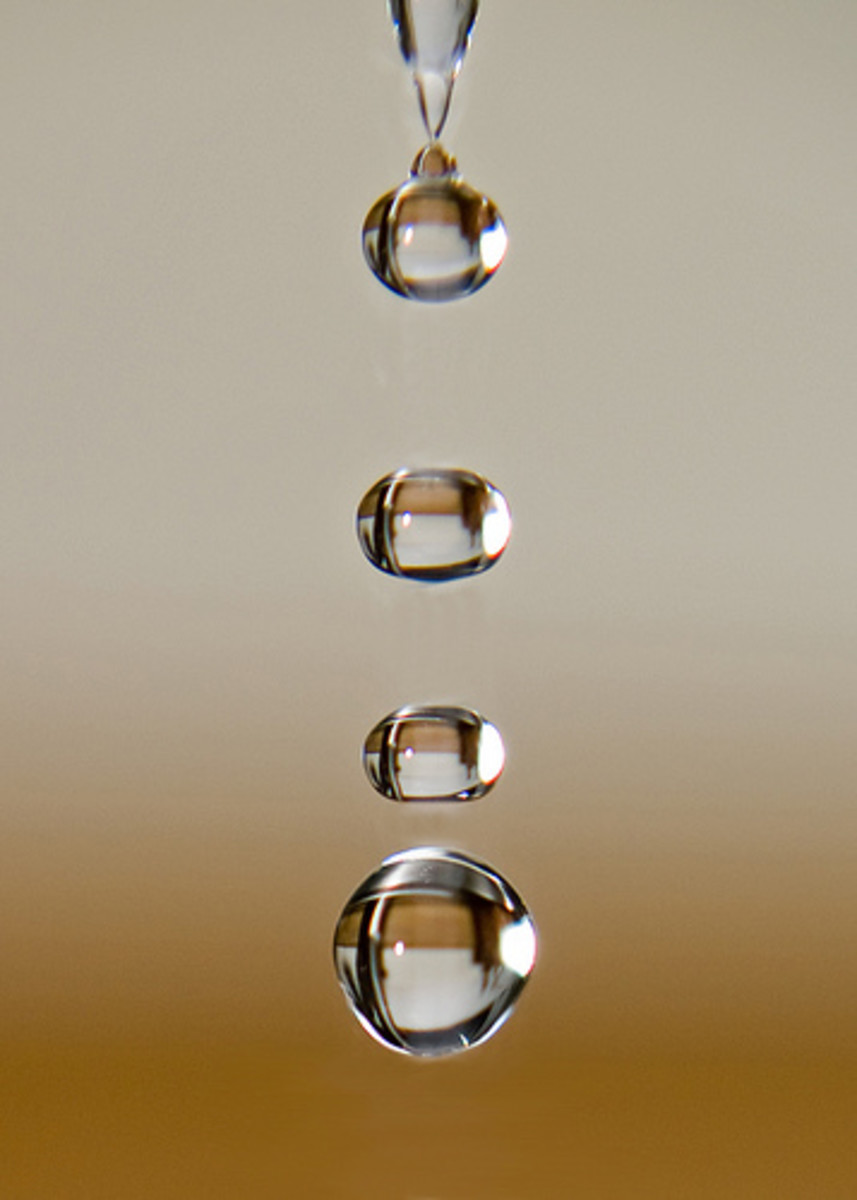- HubPages»
- Health»
- Mental Health»
- Addiction»
- Drug Addiction
Dealing With Addictions
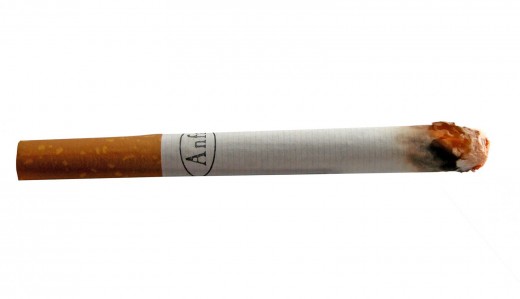
Addictions
The traditional image of an addicted person is a skid-row drunk or “dope fiend” who must have their periodic “fix” in order to fend off withdrawal. But in recent years, we have learned addictions afflict people from all walks of life.
Joe had a great job as manager of a shopping center, pulling down almost $200,000 a year. The center was sold to a large corporation, which fired Joe and installed its own management team. Even though Joe had been in the top 1% of American wage earners and had a daughter about to start college, he didn't have a dime of savings when his job ran out. In fact, he and his wife were thousands of dollars in debt. For years, they had spent their income like it was water.They are addicted to excessive spending.
Kathy was raised in a dysfunctional family with little affection, attention, or affirmation. She feels unlovable, and her life is empty. She comforts herself with ice cream, chocolates, and other sweets. She now tips the scales at more than 300 pounds. Kathy has a food addiction.
Norman is a church elder and pillar of his community. His wife discovered a huge stash of pornography while cleaning his den office. Norman is addicted to pornography.
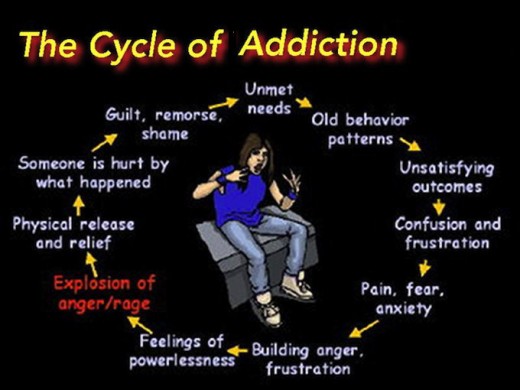
What is Addiction?
Addiction is a compulsive or physical dependence upon a substance or person. It provides a temporary sense of well-being. But the destructive effects can include damage to relationships, feelings of shame, and failure. Addiction can have long lasting effects. The substance, person, or behavior upon which a person may form an excessive dependency, is called an addictive agent. The list of addictive agents includes, but is not limited to:
-
Drugs and Alcoholism
-
Food (compulsive overeating, bulimia)
-
Sex
-
Work and Success
-
Control
-
Money (overspending, hoarding, gambling)
-
Approval (the need to please people)
-
Rescuing Behavior
-
Physical Illness (hypochondria)
-
Exercise, Diet, and Physical Conditioning
-
Perfectionism
-
Cleanliness and Avoidance of Contamination
-
Obsession with Being Organized and Structured
-
Materialism (obsession with acquiring things)
-
Preoccupation with Entertainment (video, computers, movies, music)
-
Obsession with Physical Beauty (cosmetics, sun tanning, clothes, style, cosmetic surgery)
-
Religiosity or Religious Legalism.
Most of us can find our own addictions in this list.
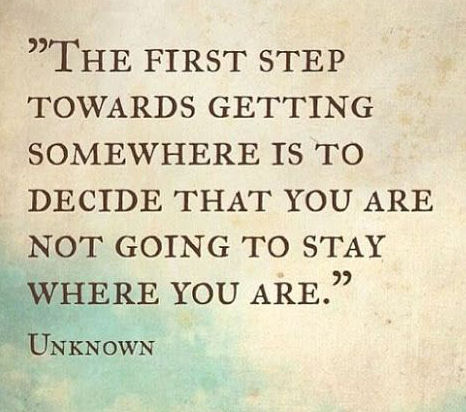
Addiction cycles
Stage 1 in the addiction cycle is emotional emptiness. In this cycle, one factor leads to another, driving the addicted person deeper into addiction and robbing them of any control they may have over their life and behavior. Another name for this first stage in the addictive cycle is love hunger, a gnawing emptiness and craving for love, affirmation, and a sense of value.
Stage 2 is low self-esteem, a sensation of emotional pain, and is a direct result of stage I. When we feel pain, we reach for an anesthetic. So it's only natural when people feel emotional pain of low self-esteem, they will try to dull it with, chemical substances, comfort foods, a boost of exhilaration from heavy exercise, work addiction, or anything to feel temporarily “okay.”
Stage 3 flows directly from stage 2, the addictive agent. It can be drugs, food, sex, rage, spending, and even religion. They are all anesthetics for low self-esteem. Addictive agents always bring more harm to the addicted than good.
Stage 4 involves consequences. The consequences of alcohol addiction may include broken relationships, lost jobs, deadly traffic accidents, and even liver disease.
The consequences of food addiction may include obesity and heart disease. The consequences of money addiction may include loss of credit and bankruptcy. It's at this stage, when consequences seem unbearable, healing can begin. Because addicted individuals have “hit bottom” so to speak, and they are willing to do anything to be healed. Many have to experience the cycle numerous times, before a true “bottom” is hit.
After experiencing consequences of addiction, individuals move on to:
Stage 5 involves guilt and shame. Thoughts like “I don't deserve to be happy or healthy. Many researchers agree,most addictions are shame-based and will eventually fester into:
Stage 6 which is self-hatred. Self hatred drives an addicted individual person to even deeper levels of emptiness and love hunger. Essentially, they have returned to stage 1, ready to start at the beginning again. Unfortunately, self-destructive addictions frequently become worse.
Recovery from Addiction
Once the cyclical nature of addiction is understood, it becomes clear recovery can only occur by finding a way to interrupt the cycle. Self esteem must be restored so the addictive agent, is no longer needed. By halting use of addictive agents the consequences will no longer exist, ending guilt and shame. The process of self hatred is reversed.
However, addiction can never be cured by simply removing the addictive agent. Addictions are symptoms of much deeper problems. To be truly healed one must:
-
Work through painful memories of dysfunctional family of origin.
-
Repair present relationships (in some cases, this means reconciling relationships. But in abusive relationships, boundaries might need to be redrawn).
-
Choose a, supportive recovery family where re-parenting can be encouraged.
To recover from these addictions, strength is needed. With severe physical addictions, such as use of alcohol or drugs, and food addiction, bodies are at war wit itself. Body chemistry has been altered, and not for the better.
Starting a Recovery Group
Obsessions and compulsions are more powerful than human will. A 12 step recovery group might be the answer.This is a fellowship who have come together to find healing from their addictions. Recovery groups come in all shapes and sizes, and exist for a wide variety of purposes. Some recovery groups average two or three people per meeting. Some average over 100. Some are for men, others for women. Some focus on single issues, such as alcoholism, codependency, or compulsive overeating. Some groups are made up of people with various problems into a single fellowship. Whatever form it takes, all groups should provide eight things:
1. Mutual Support.
2. Opportunity to listen to others and learn from their experience.
3. Opportunity to confront those in denial or otherwise hurting their own recovery.
4. Opportunity to learn about addiction and its causes.
5. Opportunity to gain insight into one's own issues and motivations.
6. Opportunity to work through one's own resistances and penetrate one's own denial.
7. Opportunity to express and ventilate emotion.
8. Opportunity to become involved in helping others.
The basis of a recovery group is the support we gain in relationships. It's not surprising then, the process of healing should occur within a network of relationships. Recovery is a group experience, it can't take place in isolation.
A recovery group is a fellowship of healing, not a treatment center. An alcoholic, for example, doesn't go to there to get sober. They must first go to a treatment center for medically supervised detoxification. It's then an alcoholic is welcome to join a recovery program in order to maintain their sobriety.
Learn the traditions that have kept recovery groups functioning more than half a century. If you are not familiar with recovery issues, find some members who are.
Group focus
Is the group concerned with recovery from addictive behavior such as substance abuse, overeating, overworking, or an adult/child issue such as abuse, neglect, or incest? If so, it's a recovery group. If the group is intended as a mutual support system issues such as divorce, chronic illness, or parenting? Then it is a support group.
Group size, structure, and membership.
In a smaller group such as 20, everyone has a chance to share.Some groups are structured and include lectures, workbooks, or scheduled themes for discussion. Some groups have an open membership, where it's free to come and go. However, groups demanding an especially high degree of trust and confidentiality such as incest or rape are best held in closed groups.
Ground rules. In order to have a safe place in which members can discuss their issues openly and honestly, the boundaries of the group need to be settled in advance. Ground rules governing participation should be clearly understood and referenced often by group leaders.
Atmosphere of acceptance. The key to an effective recovery group is acceptance. No one is judged for what they share or believe in the group.There is no condemnation.
Every effective recovery group has accountability and even confrontation. Especially when a member is in denial. But this accountability is surrounded by total support and caring. This means there is a bond of empathy and unconditional love. Members are accepted regardless of shortcomings, however they must not self-destruct in the process.
For example, if there is an abusive person in the group who tries to control the meeting, and in the process harms the recovery process of others, they must be confronted and re-indoctrinated with the rules.

